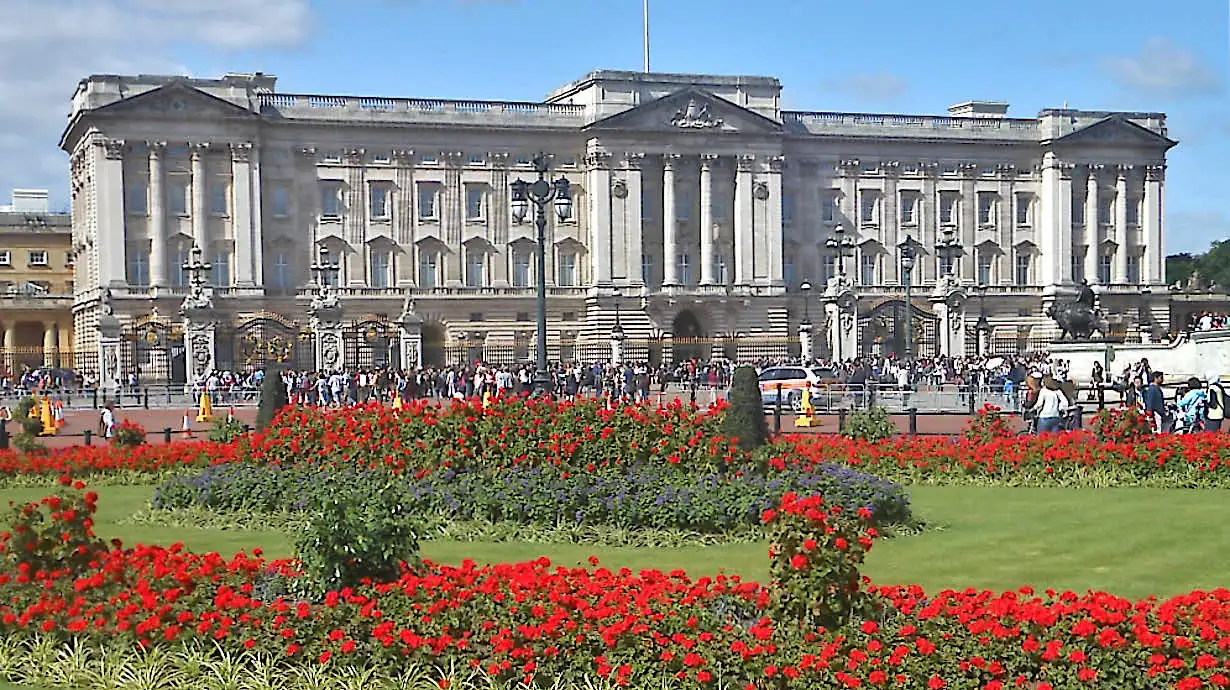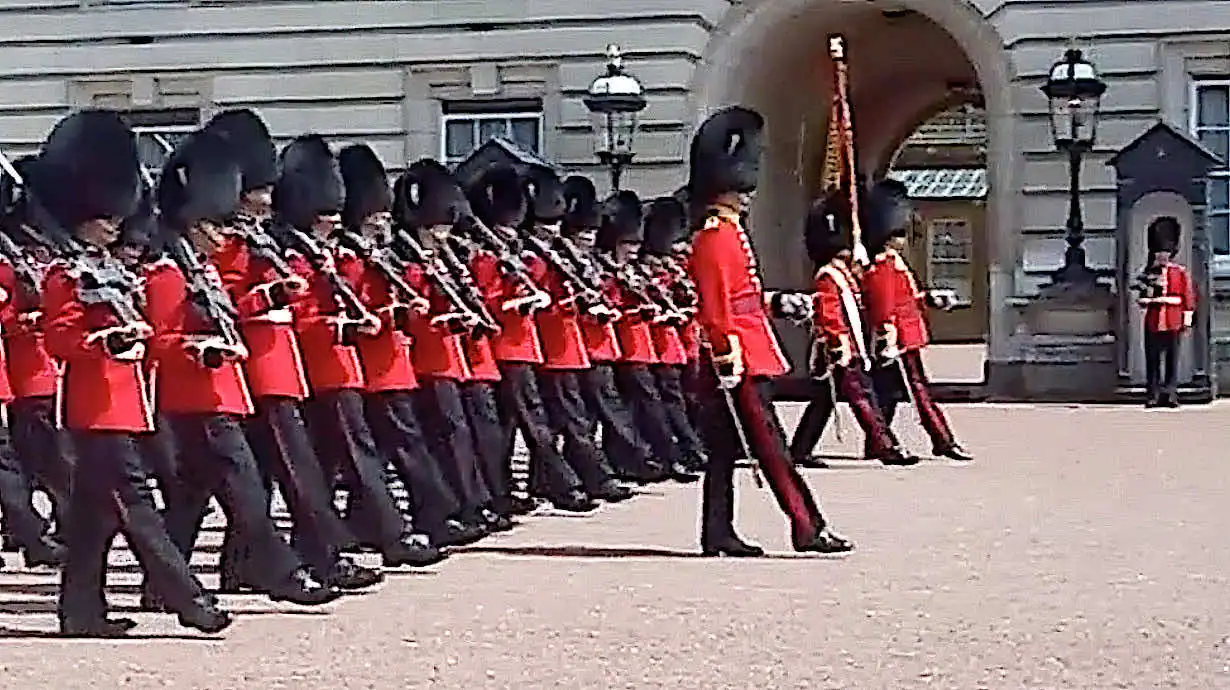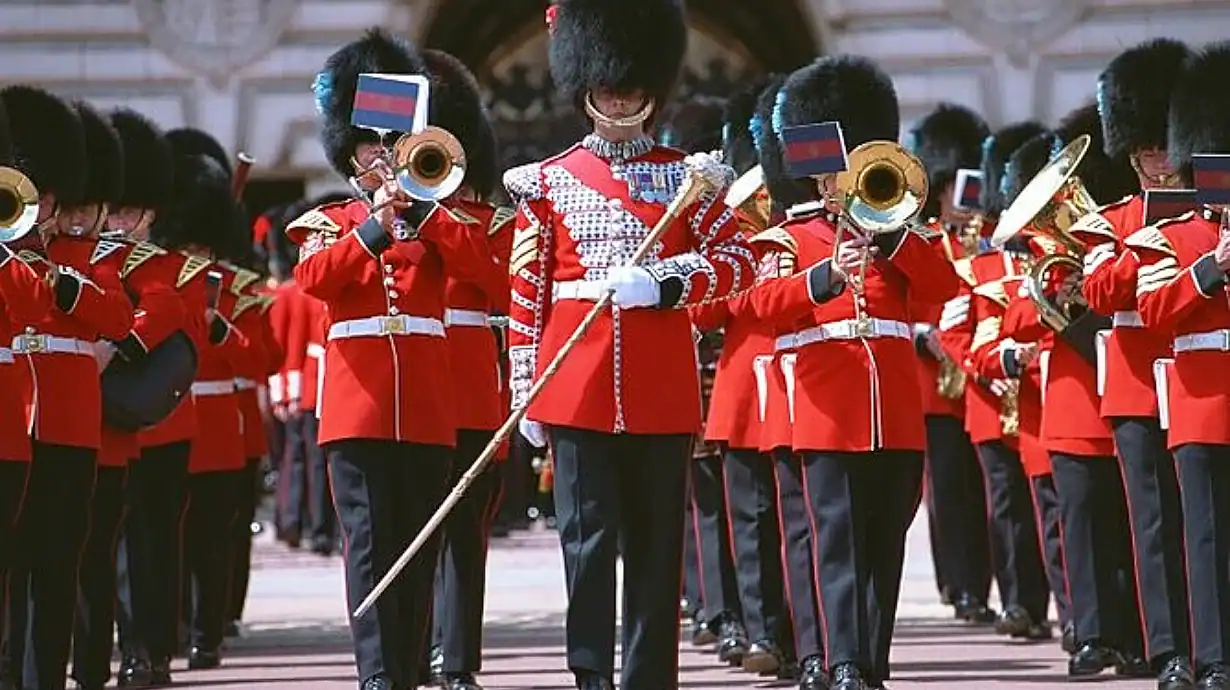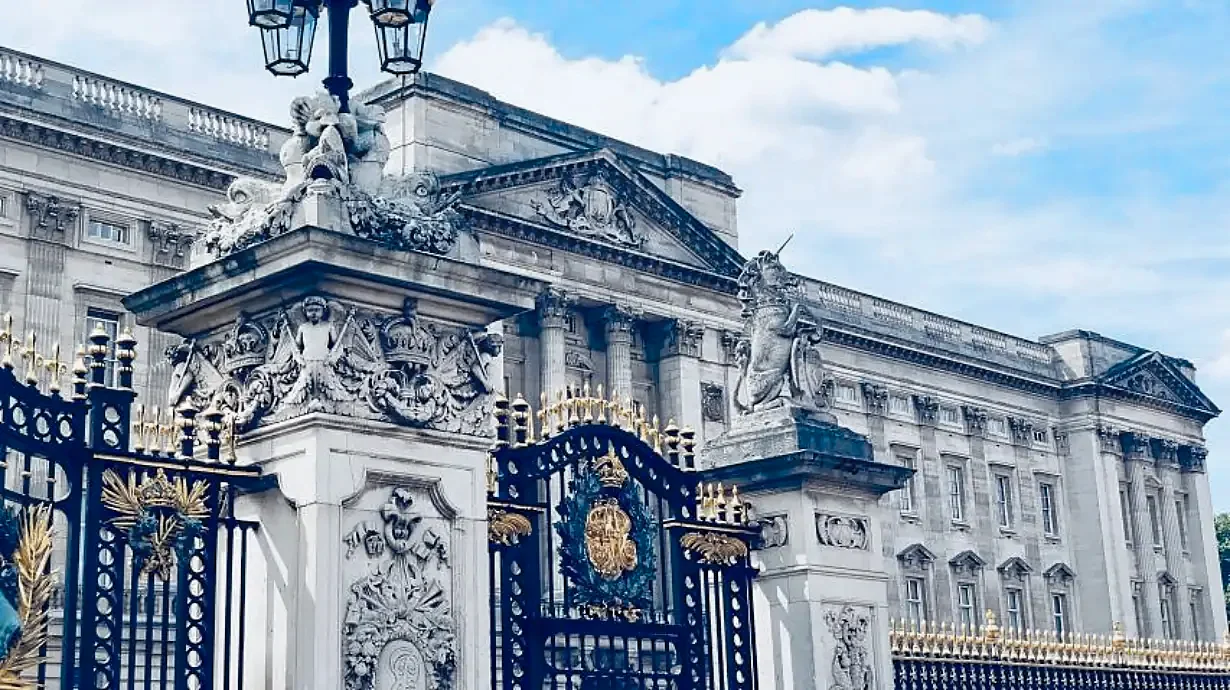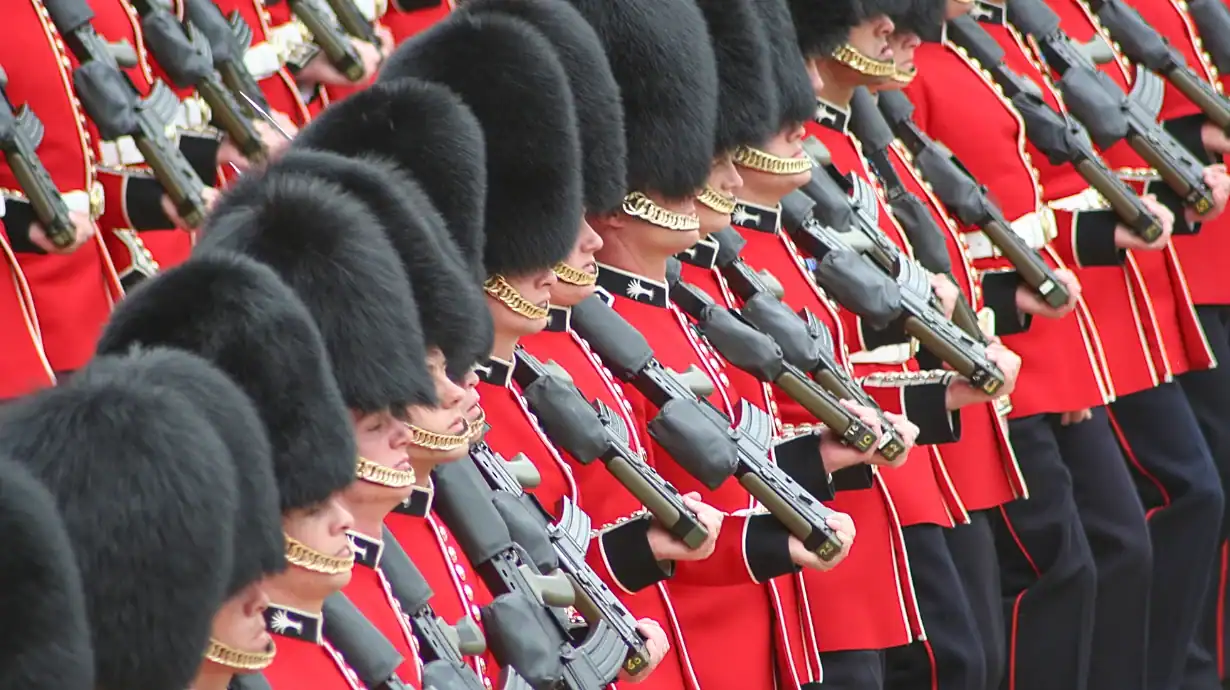
Whenever you visit one of London's daily parades or see a soldier standing guard outside Horse Guards, Buckingham Palace, Windsor Castle or the Tower of London, then you'll be seeing soldiers from the Household Division.
A lot of visitors mistakenly believe that they're just there to provide a bit of colour for the tourists, but they are most certainly real soldiers -- they're guarding these places for a reason! And when they're not on ceremonial duty they'll be on operational duties overseas.
Household Division - Foot Guards & Household Cavalry
The Household Division is made up of seven different regiments: five from the Foot Guards (Grenadier Guards, Coldstream Guards, Scots Guards, Irish Guards and Welsh Guards) and two from the Household Cavalry (Life Guards and Blues & Royals).
The Household Cavalry is then sub-divided further into the Household Cavalry Regiment (for armoured vehicles) and the Household Cavalry Mounted Regiment (for horses). It's this second one that conducts all the ceremonial duties in London.
The Life Guards and Blues & Royals are easy to tell apart, and if you want to spot the difference between the five Foot Guards regiments then all you have to do is look at the buttons down the front of their jackets.
Uniform of the Life Guards
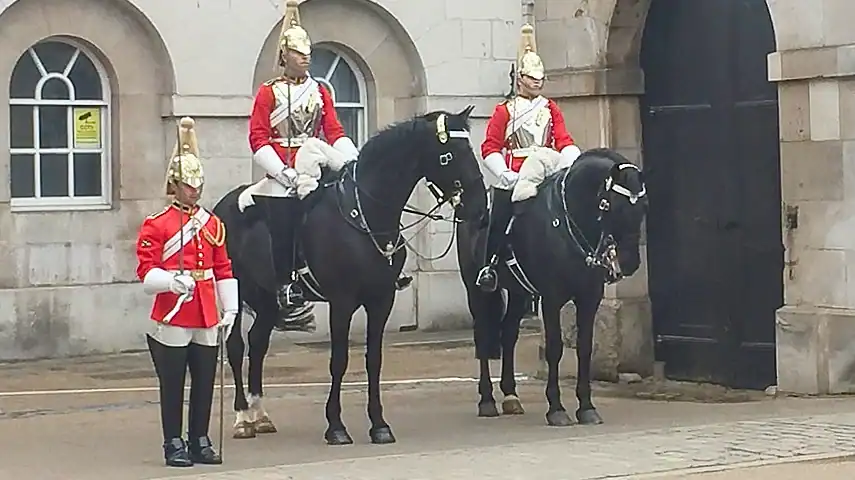 Photo: londondrum.com
Photo: londondrum.comThe Life Guards date all the way back to the reign of King Charles II when they acted as his own personal bodyguard whilst he was in exile on the continent.
They are easily recognisable by their red tunic and white plume on their helmet. You can also look for a white sheepskin over the saddles.
Uniform of the Blues & Royals
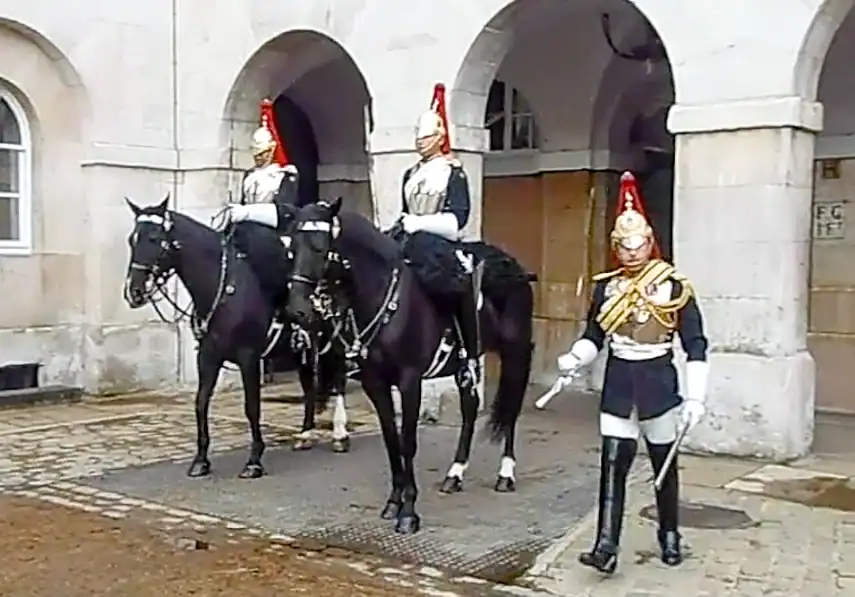 Photo: londondrum.com
Photo: londondrum.comThe Blues & Royals date back to 1650 when they were part of Oliver Cromwell's army.
They are another easy regiment to recognise because of their dark blue tunics and red plumes on their hat. You can also look for a black sheepskin over their saddles.
Uniform of the Grenadier Guards
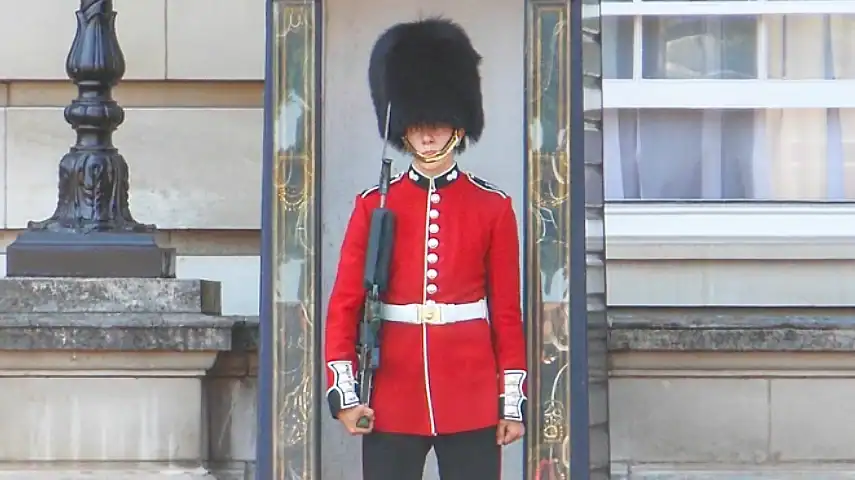 Photo: londondrum.com
Photo: londondrum.comThe Grenadier Guards are the second-oldest of the five Foot Guards regiments and were formed to protect King Charles II during his exile in Europe. They are based at Wellington Barracks on the southside of St. James's Park.
You can recognise them by the evenly-spaced buttons on their tunic -- all of the buttons are in a single row down the front. You can also look for the white plume on the lefthand side of their bearskin hat, and a grenade motif on their black neck collar.
Uniform of the Coldstream Guards
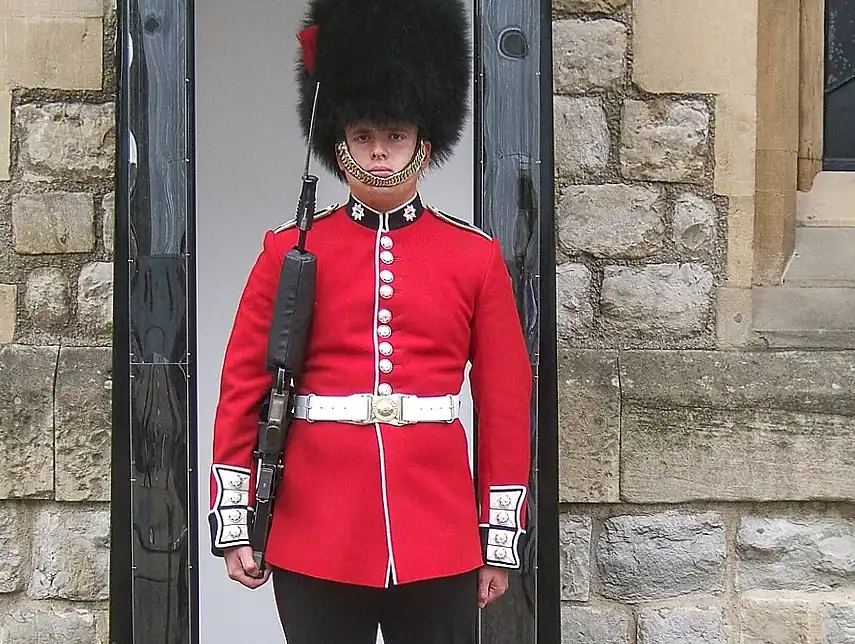 Photo: Wikimedia Commons
Photo: Wikimedia CommonsThe Coldstream Guards were originally part of Oliver Cromwell's New Model Army during the English Civil War, and General Monck famously marched them towards London to restore the monarchy under Charles II. It was the Coldstream Guards who made one of the most famous defences in British military history when they fought for the farmhouse at the Battle of Waterloo.
As the second regiment of the Foot Guards (a position they are loathe to accept because they are actually older then the Grenadier Guards!) they can be distinguished by their buttons being arranged in twos down the front of their tunics. They also have a red plume on the righthand side of their bearskin and a Garter star on their black neck collar.
Uniform of the Scots Guards
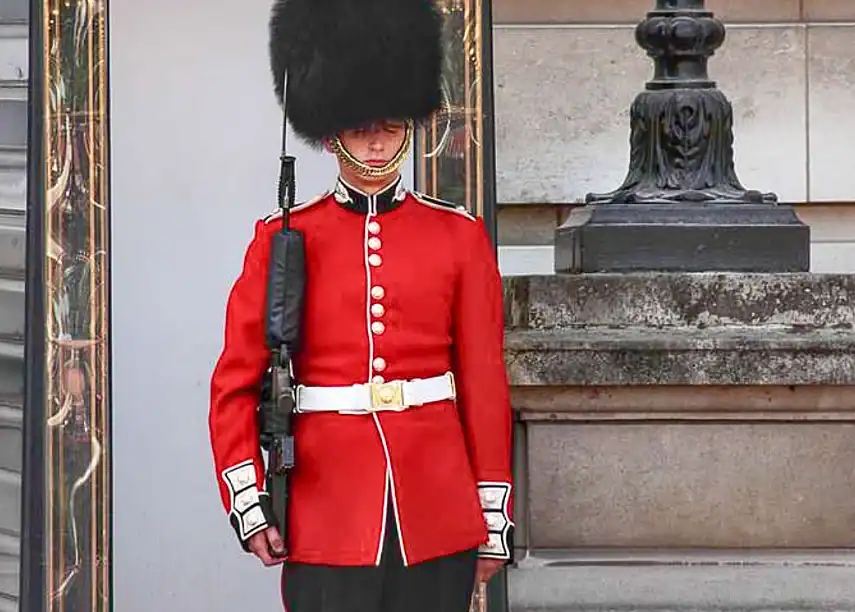 Photo: Wikimedia Commons
Photo: Wikimedia CommonsThe third regiment of the Foot Guards are actually the oldest, dating all the way back to 1642. They are stationed in Wellington Barracks by St. James's Park.
You can identify them by the groups of three buttons on their tunics, and by the thistle on their black neck collar. They don't have a plume in their bearskin.
Uniform of the Irish Guards
 Photo: Panhard/Wikimedia Commons
Photo: Panhard/Wikimedia CommonsThe Irish Guards are a relatively new regiment, having only been formed in 1900. Their tunic buttons are arranged in groups of four, and if you look very closely then you might be able to see the Harp of Ireland on each one.
You can also look for a shamrock on their black neck collar and a blue plume on the righthand side of their bearskin hat.
Uniform of the Welsh Guards
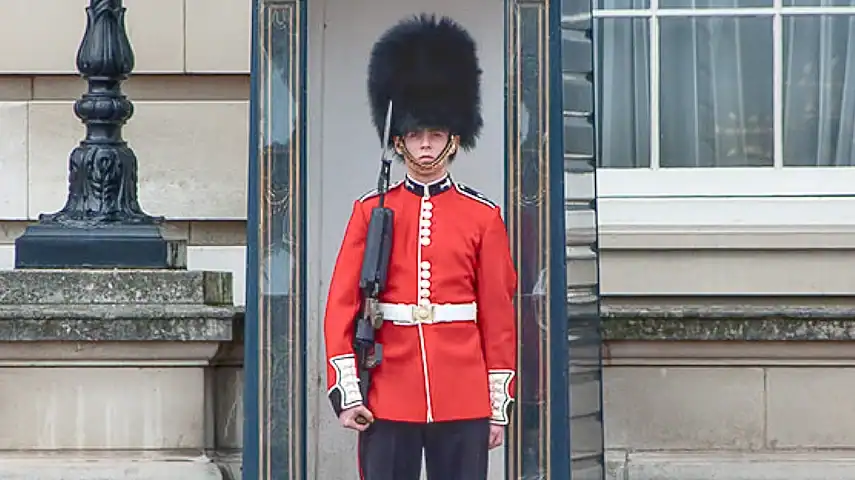 Photo: Flickr.com
Photo: Flickr.comThe Welsh Guards were formed by George V in 1915. As the fifth regiment of the Foot Guards they have their tunic buttons arranged in two groups of five. They also have a leek on their black neck collar and a white-green-white plume on the lefthand side of their bearskin hat.
The regimental marching bands
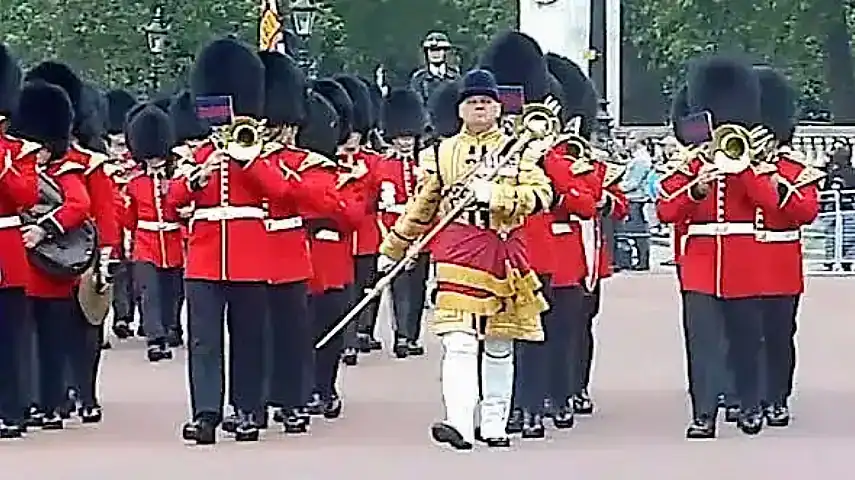 Photo: londondrum.com
Photo: londondrum.comEach of the five regiments of the Foot Guards also have their own regimental band, which together form the Army Corps of Music. Each one has a Corps of Drums (apart from the Scots Guards), whilst the Scots Guards and Irish Guards also have a Pipe Band. It's these bands that provide the music during Changing the Guard.
